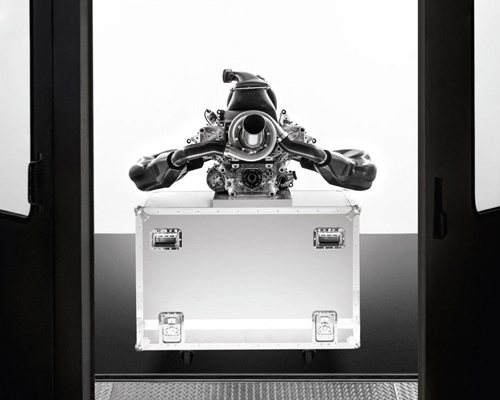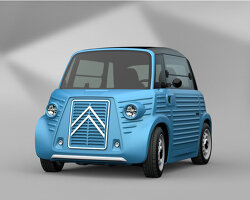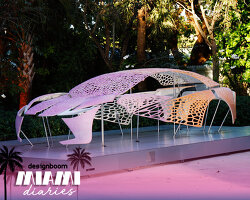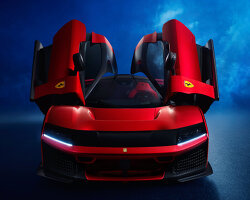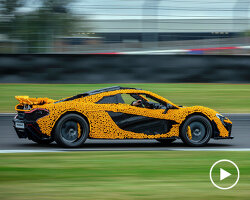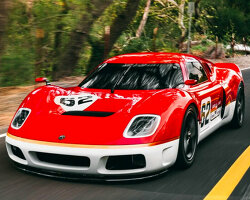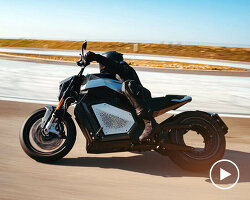renault f1 presents 760 horsepower 1.6L turbocharged power-unit ahead of 2014 season
all images courtesy renault sport f1
with an era of the 2.4 liter naturally aspirated V8 powered engine now behind us, renault sport F1 is the first of three formula one engine suppliers to present their 760 horsepower 1.6 liter V6 hybrid ‘energy f1-2014 power unit’ to the world. from this year onwards, each F1 car will be powered by advanced powertrain technology, with a turbocharged internal combustion engine coupled to sophisticated energy recovery systems. renault’s internal combustion engine will produce power through consumption of traditional carbon-based fuel, while electrical energy will be harvested from exhaust and braking by two motor generator units. the two systems will work in harmony, with teams and drivers balancing the use of the two types of energy throughout the race.
to see what renault has in store for the 2014 F1 season, feast on some eye candy below:
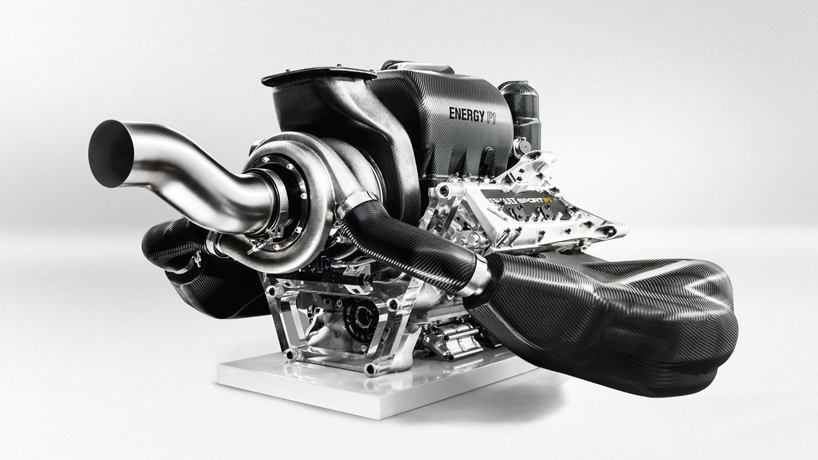
internal combustion v6 engine
in short:
V6 is shorthand for an internal combustion engine with its cylinders arranged in two banks of 3 cylinders arranged in a ‘v’ configuration over a common crankshaft. the renault energy F1 V6 has a displacement of 1.6 liters and will make around 600bhp.
the challenge:
on account of the turbocharger the pressures within the combustion chamber are enormous – almost twice as much as the v8. the crankshaft and pistons will be subject to massive stresses and the pressure within the combustion chamber may rise to 200bar, or over 200 times ambient pressure.
one to watch:
the pressure generated by the turbocharger may produce a ‘knocking’ within the combustion chamber that is very difficult to control or predict. should this destructive phenomenon occur, the engine will be destroyed immediately.
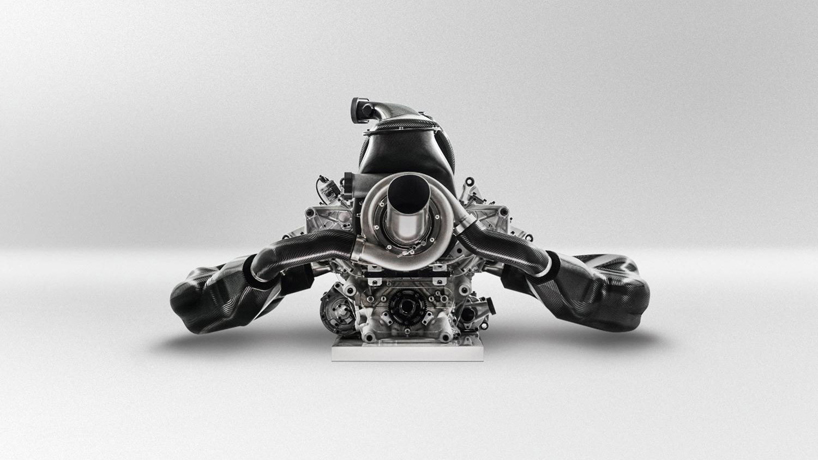
direct fuel injection
in short:
all power units must have direct fuel injection (DI), where fuel is sprayed directly into the combustion chamber rather than into the inlet port upstream of the inlet valves. the fuel-air mixture is formed within the cylinder, so great precision is required in metering and directing the fuel from the injector nozzle. this is a key sub-system at the heart of the fuel efficiency and power delivery of the power unit.
the challenge:
one of the central design choices of the ice was whether to make the DI top mounted (where the fuel is sprayed at the top of the combustion chamber close to the spark plug) or side mounted (lower down the chamber).
one to watch:
the option still remains to cut cylinders to improve efficiency and driveability through corners.
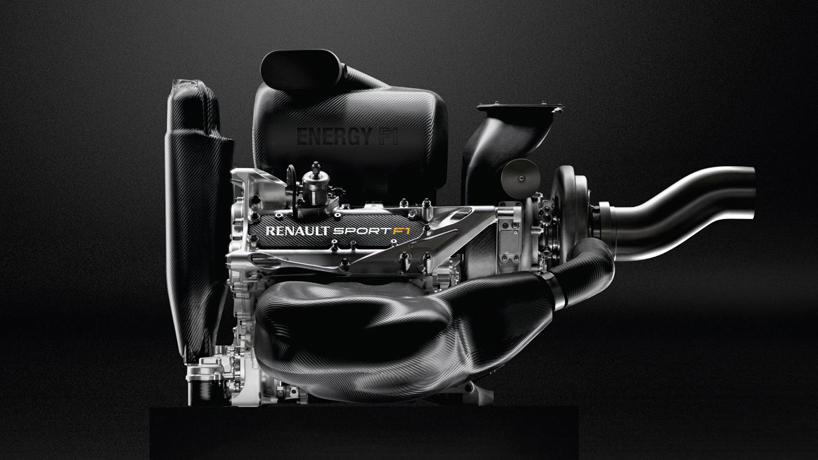
turbocharger
in short:
a turbocharger uses exhaust gas energy to increase the density of the engine intake air and therefore produce more power. similar to the principle employed on roadcars, the turbocharger allows a smaller engine to make much more power than its size would normally permit. the exhaust energy is converted to mechanical shaft power by an exhaust turbine. the mechanical power from the turbine is then used to drive the compressor, and also the mgu-h (see below).
the challenge:
at its fastest point the turbocharger is rotating at 100,000 revolutions per minute, or over 1,500 times per second, so the pressures and temperatures generated will be enormous. some of the energy recovered from the exhaust will be passed on to the MGU-H and converted to electrical energy that will be stored and can later be re- deployed to prevent the turbo slowing too much under braking.
one to watch:
as the turbocharger speed must vary to match the requirement of the engine, there may be a delay in torque response, known as turbo lag, when the driver gets on the throttle after a period of sustained braking. one of the great challenges of the new power unit is to reduce this to near zero to match the instant torque delivery of the V8 engines.
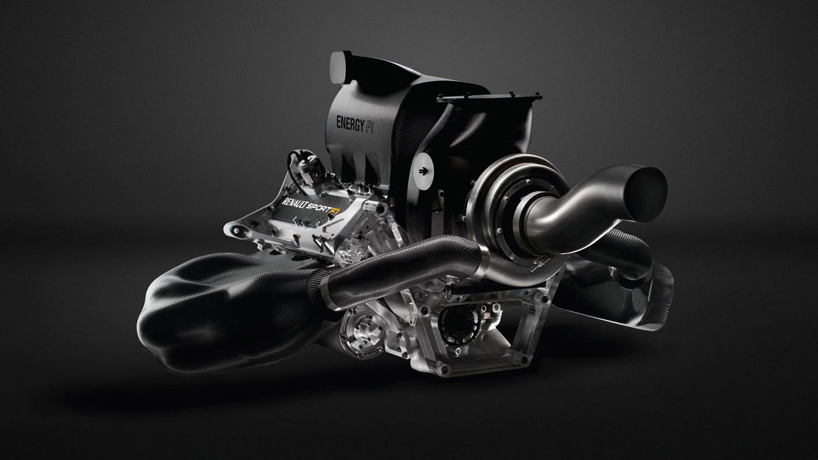
MGU-K
in short:
the MGU-K is connected to the crankshaft of the internal combustion engine. under braking, the MGU-K operates as a generator, recovering some of the kinetic energy dissipated during braking. it converts this into electricity that can be deployed throughout the lap (limited to 120 kw or 160bhp by the rules). under acceleration, the MGU-K is powered from the energy store and/or from the MGU-H and acts as a motor to propel the car.
the challenge:
whilst in 2013 a failure of kers would cost about 0.3s per lap at about half the races, the consequences of a MGU-K failure in 2014 would be far more serious, leaving the car propelled only by the internal combustion engine and effectively uncompetitive.
one to watch:
thermal behaviour is a massive issue as the MGU-K will generate three times as much heat as the V8 KERS unit.
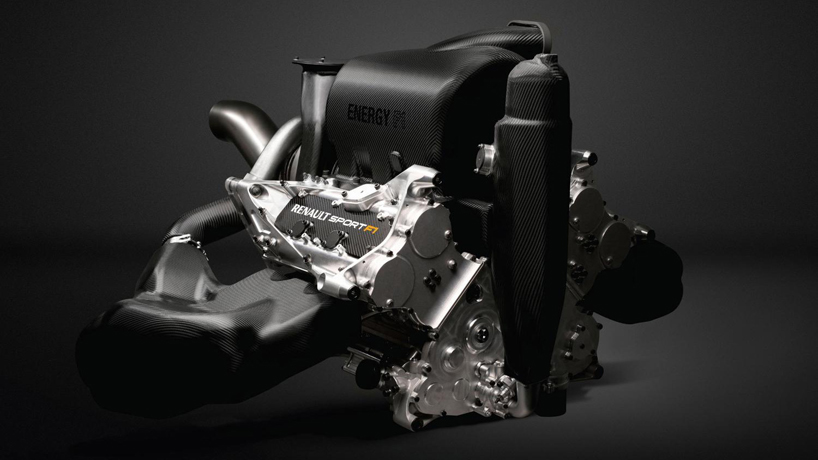
MGU-H
in short:
the MGU-H is connected to the turbocharger. acting as a generator, it absorbs power from the turbine shaft to convert heat energy from the exhaust gases. the electrical energy can be either directed to the MGU-K or to the battery for storage for later use. the MGU-H is also used to control the speed of the turbocharger to match the air requirement of the engine (eg. to slow it down in place of a wastegate or to accelerate it to compensate for turbo lag.)
the challenge:
the MGU-H produces alternative current, but the battery is continuous current so a highly complex convertor is needed.
one to watch:
very high rotational speeds are a challenge as the MGU-H is coupled to a turbocharger spinning at speeds of up to 100,000rpm.
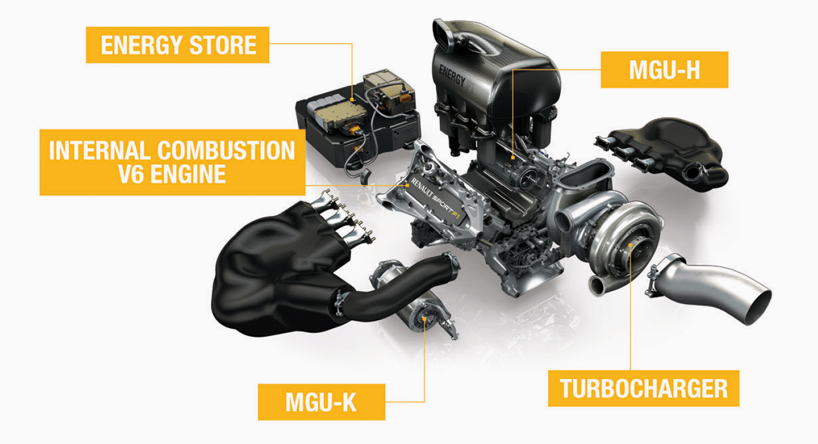
battery (or energy store)
in short:
heat and kinetic energy recovered can be consumed immediately if required, or used to charge the energy store, or battery. the stored energy can be used to propel the car with the mgu-k or to accelerate the turbocharger with the mgu-h. compared to 2013 kers, the ers of the 2014 power unit will have twice the power (120 kw vs 60 kw) and the energy contributing to performance is ten times greater.
the challenge:
the battery has a minimum weight of 20kg to power a motor that produces 120kw. each 1kg feeds 6kw (a huge power to weight ratio), which will produce large electromagnetic forces.
one to watch:
the electromagnetic forces can impact the accuracy of sensors, which are particularly sensitive. balancing the forces is like trying to carry a house of cards in a storm – a delicate and risky operation.
